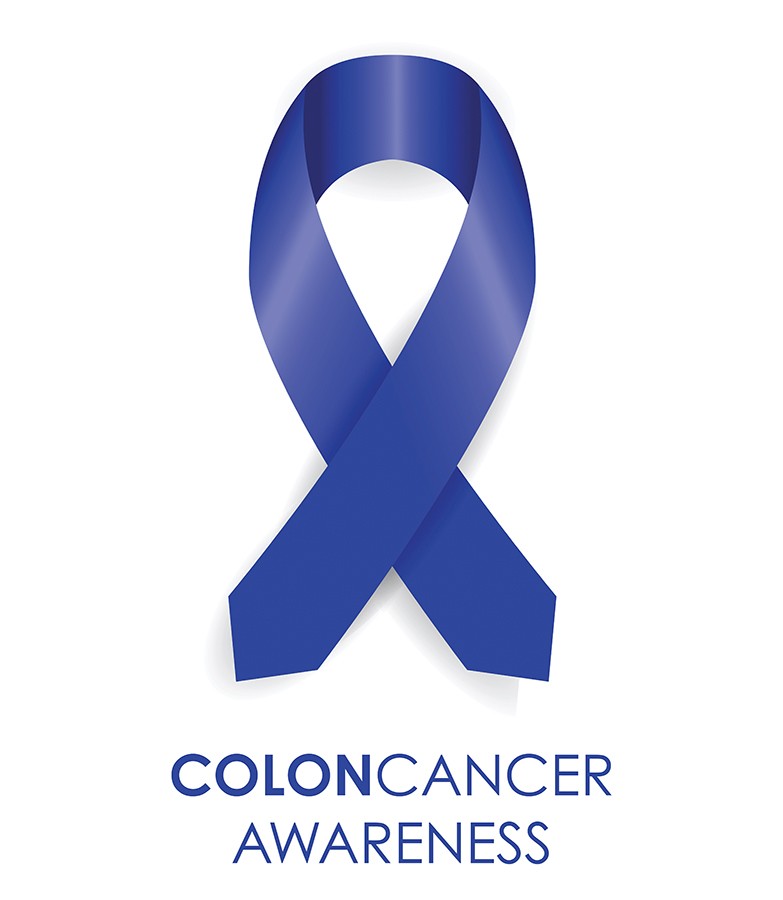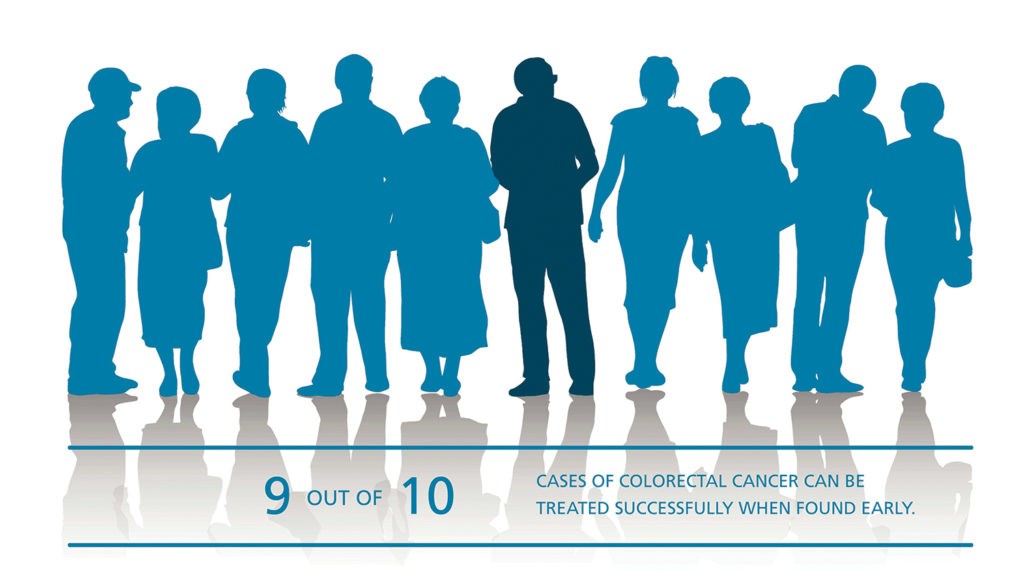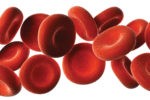Getting Serious About Colorectal Cancer

At Healthy Kansas City magazine, we never pass up an opportunity to raise awareness around a serious health concern. We do not shy away from hard talks, but we do like to focus on positive outcomes and how to achieve them. March is National Colorectal Cancer Awareness Month and we want to join our voice along with many others to encourage our community to take control of their health and get serious about colorectal cancer.
In February 2000, President Clinton officially declared March as National Colorectal Cancer Awareness Month. Since that time it has become a valuable opportunity for those fighting cancer, survivors, and those in the medical community to share experiences, educate, and advocate.
Colorectal Cancer is Serious
According to the American Cancer Society, colorectal cancer is the third leading cause of cancer-related deaths in women and the second leading cause of cancer-related deaths in men. Most people find that surprising on two counts. First, that it is that deadly and second, that it impacts men and women. They are even more astonished to find that it can, though rarely, even impact children.
 Rising Concern
Rising Concern
The American Cancer Society estimates there will be more than 145,000 new cases of colorectal cancer diagnosed in the United States in 2019. That includes an estimated 101,420 new cases of colon cancer and 44,180 new diagnoses of rectal cancer. It is expected to be deadly in 50,000 cases. Even more concerning, according to a recent study, Colorectal Cancer Incidence Patterns in the United States, 1974–2013, published in JAMA, the incidence rate of colorectal cancer deaths is rising in those age 50 and younger, the age recommended screenings are to begin.
According to the study, while the risk for 50 and younger remains low, adults born in 1990 could have twice the risk of colon cancer and four times the risk of rectal cancer at the same age had they been born in 1950. The reason for the rise in both incidence and death rates remains unclear.
Overall, the lifetime risk of developing colorectal cancer is about 1 in 22 (4.49%) for men and 1 in 24 (4.15%) for women. This risk is slightly lower in women than in men. Though it is not clear why the belief developed, one of the most common misconceptions about colon cancer is that it is a “man’s disease”. This often leads women to delay screenings and ignore symptoms.
Decreasing Your Risk Factors
While it is not clear what causes colorectal cancer, researchers have identified certain factors that can increase our risks. Some of these factors are a diet that includes processed and red meats, obesity, smoking, drinking alcohol, and inactivity. Other factors include a family history of the disease, aging, or having an inherited syndrome.
Patients can take control of their health by addressing the controllable risk factors, and getting regular screenings, and encouraging others to do the same.
Don’t Wait for Symptoms
For the most part, colorectal cancer is a silent disease, taking years to progress to the point where a patient experiences symptoms. Most people do not have any symptoms at all in the early stages and those that do have symptoms may dismiss them until they become more serious or distressing. This may be because some of the symptoms, such as a change in bowel movements, weakness or fatigue, or weight loss, can be blamed on other things. Additional symptoms include rectal bleeding, blood in your stool, persistent abdominal discomfort such as cramps, and a feeling that your bowel does not empty. When symptoms appear, they vary from person to person depending on the size and location of the cancer within the large intestine.
According to data provided by the National Center for Health Statistics, more than one-third of Americans over 50 do not receive the recommended screenings. All cancers including colorectal cancer are most treatable in the earliest stages which is what makes regular screenings so important.
The Good News in Colorectal Cancer
As distressing as this disease is, the good news is that it is highly preventable with early detection, and there would be far fewer fatalities of the disease if screening guidelines were followed.
Current recommendations for screening for colorectal cancer is all adults ages 50 and older, although screening may start at younger ages for individuals who are at high risk for colon cancer. The frequency of screening is based on an individual’s risk for colorectal cancer and the type of screening test that is used. An individual is considered to be at high risk for colorectal cancer if he or she has had colorectal cancer before or has a history of polyps, has a family member who has had colorectal cancer or a history of polyps, or has a personal history of inflammatory bowel disease, including Crohn’s Disease and ulcerative colitis.

Colorectal Screenings Today
There is hardly a physician anywhere that does not promote timely and appropriate screenings. How those screenings should take place can be confusing, especially for the patient. Today, patients are faced with a barrage of celebrity-endorsed health product campaigns delivered in such a way as to seem like a public health campaign and not at all recognizable for what they actually are: product advertisements. This is true for at-home tests for colorectal cancer.
And the heavily-funded product campaigns have resulted in over 1.3 million people taking the screening which leaves physicians in a ponderous position. Increased screening for the second-most common cancer killer in the US is undeniably, good. However, many physicians are concerned that the trend is for patients to lean into convenience without considering the limitations of such at home screenings.
When talking about colorectal cancer screening, the colonoscopy is the gold standard because it can remove cancerous and precancerous polyps if detected. Another method is the fecal immunochemical test (FIT), which checks stool for tiny amounts of blood given off by polyps or colorectal cancer. The common at-home test checks stool for blood as well as abnormal DNA shed by polyps.
In a 2014 study funded by the makers of the at-home test comparing the three methods of testing, researchers found that a colonoscopy was better at finding cancer and precancerous polyps than both the at-home and FIT test. The at-home test detected cancer with 93% accuracy, meaning it could fail to detect cancer in one in every 13 people. When ninety-five percent of colon cancer begins as polyps, that is concerning.
While the at-home test is a quality screening method and can be very beneficial and contributes to more people getting any type of screening, it is important to remember that only the colonoscopy can both detect and prevent colon cancer. The truth is, we are very fortunate to have any type of screenings available to us. Many cancers do not.
Cancer is never easy to talk about, but when a simple test can detect and prevent it, it is time we all have the conversation. Get screened and encourage others to do the same.





